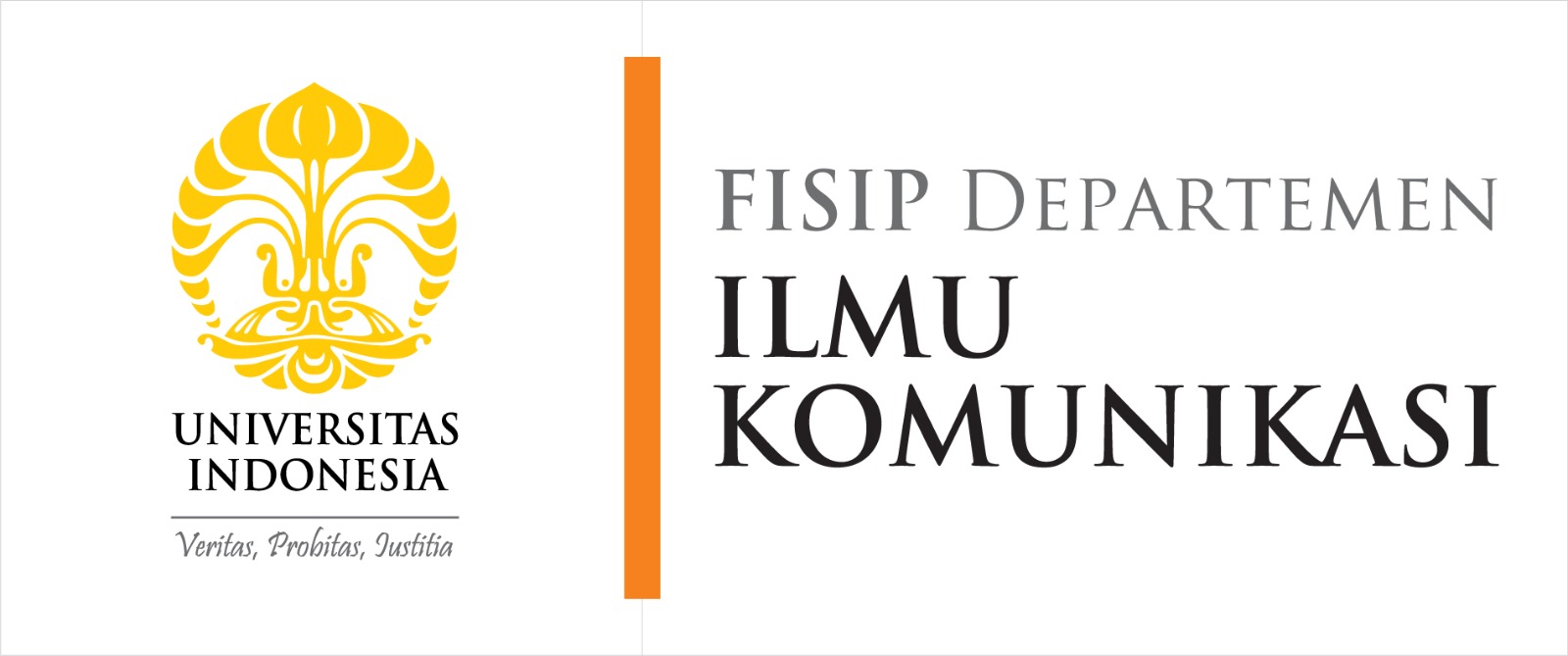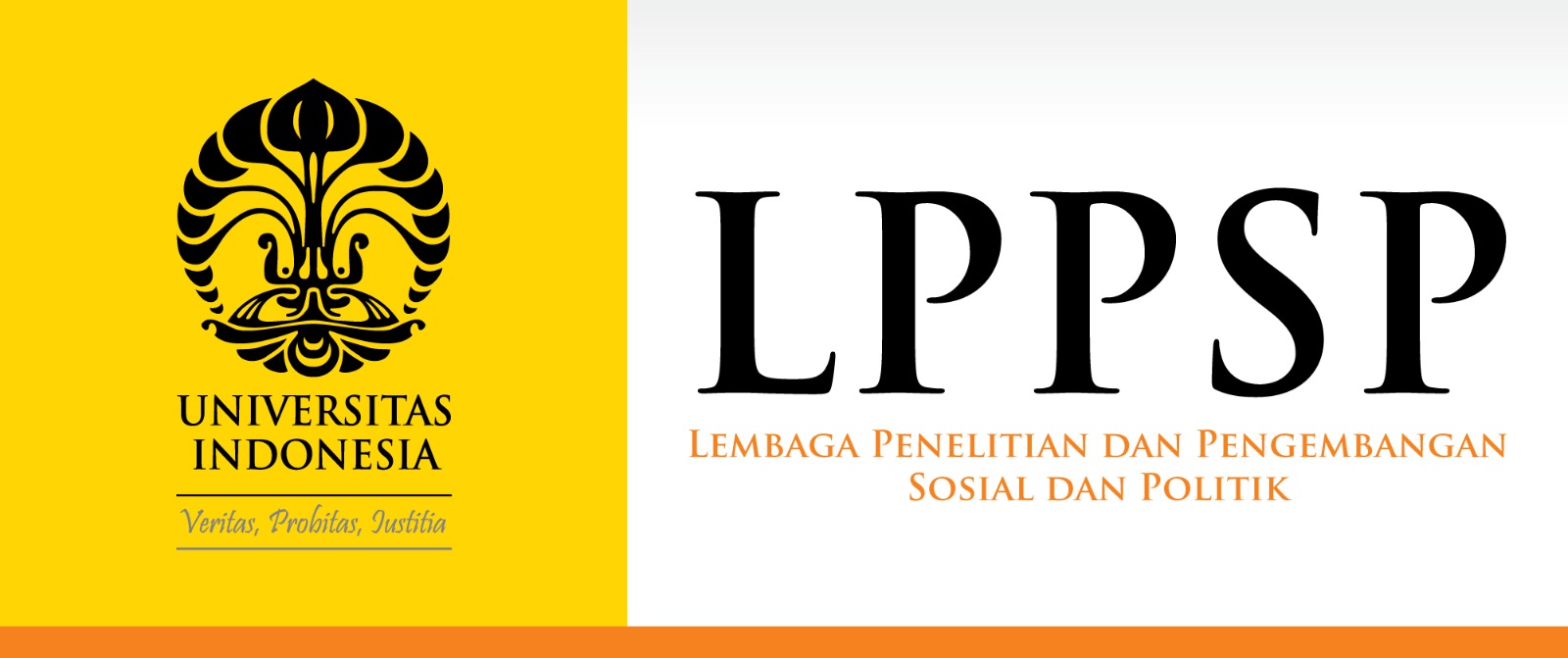JURNAL KOMUNIKASI INDONESIA
Abstract
Kaum gay masih sulit berkomunikasi dengan gay lainnya layaknya masyarakat dominan akibat orientasi seksual yangdimiliki. Oleh karena itu, kaum gay membutuhkan suatu media alternatif untuk dapat berkomunikasi guna memenuhi kebutuhan pribadinya, baik dalam hal sosial maupun seksual. Kaum gay pun menggunakan aplikasi Jack’D untuk memenuhi kebutuhan tersebut. Penelitian ini ingin mengetahui pola komunikasi antarpribadi yang terjadi di situs jaringan sosial oleh kaum gay sebagai pengguna aplikasi Jack’D. Penelitian ini menggunakan dua konsep sebagai landasan teoritisnya, yaitu Computer Mediated Communication (CMC) dan Social Information Processing Theory (SIP). Paradigma yang digunakan dalam penelitian ini adalah konstruktivisme dengan pendekatan penelitian kualitatif. Adapun jenis penelitian ini adalah deskriptif dengan unit analisisnya individu yaitu kaum gay yang menggunakan aplikasi Jack’D. Disain penelitian yang digunakan pada penelitian ini adalah studi kasus. Penelitian ini menggunakan teknik pengumpulan data yaitu wawancara mendalam, observasi partisipan, dan dokumentasi. Hasil penelitian ini menunjukkan bahwa kaum gay memiliki tujuan dan caranya masing-masing ketika menggunakan aplikasi Jack’D guna memenuhi kebutuhan pribadinya masing-masing. Sehingga tidak dapat dipungkiri bila komunikasi termediasi memiliki peranan untuk menghubungkan kaum gay dengan sesamanya. Dengan catatan komunikasi termediasi ini harus dilakukan pada banyak platform untuk menunjang perkembangan suatu hubungan. Namun, komunikasi interpersonal secara tatap muka tetap menjadi pencapaian akhir perkembangan suatu hubungan kaum gay.
Gay community still finds difficulties in communicating with each other like the dominant society due to their sexual orientation. Therefore, gays need an alternative media to be able to communicate and meet their private needs, both in the social and sexual terms. The gays also use the Jack’D app to meet those needs. This study aims to know the pattern of interpersonal communication that occurs among gays who use Jack’D application. This study uses two concepts as the theoretical foundation, namely Computer Mediated Communication (CMC) and Social Information Processin Theory (SIP). The paradigm used in this research is constructivism with qualitative research approach. The type of this research is descriptive with individual analysis unit, which is gay community who uses Jack’D application. The research design adopted in this research is case study. To collect data, this study employs in-depth interviews, participatory observation, and documentation. The results of this study indicate that gays have their own goals and methods when using the Jack’D app to meet their individual needs. Therefore, it can’t be denied that mediated communication plays a role in connecting gays with each other. These mediated communication should be conduced on multiple platforms to support the development of a relationship. However, face-to-face interpersonal communication remains the ultimate goal of relationship.
References
Buku
Berger, Charles R., Roloff, Michael E., & Ewoldsen, David R Roskos. 2014. The Handbook of Communication Science. Bandung: Penerbit Nusa Media.
Boellstorff, Tom. 2005. The Archipelago: Sexuality and Nation in Indonesia. Pricenton and Oxford: Princeton University Press.
Bungin, Burhan. 2013. Sosiologi Komunikasi (Teori, Paradigma, dan Diskursus Teknologi Komunikasi di Masyarakat). Jakarta: Kencana Prenada Media Group.
¬¬¬¬Creswell, John W. 2015. Penelitian Kualitatif 7 Desain Riset. Ed 3. Yogyakarta: Pustaka Pelajar.
Denzin, Norman K., & Lincoln, Yvonna S. 2009. Handbook of Qualitative Research. Yogyakarta: Pustaka Pelajar.
Floyd, Kory. 2012. Interpersonal Communication. 2nd Ed. New York: McGraw-Hill.
Gamble, T. K., & Gamble, M. 2008. Communication Works. New York: McGraw-Hill.
Giddens, Anthony., Mitchell Duneier., and Richard Appelbaum. 2005. Introduction to Sociology. 5th Edition. New York: W.W Norton & Company, Inc.
Kirk, St.Amant. & Kelsey Sigrid. 2012. Computer-Mediated Communication Across Cultures: International Interactions in Online Environtment. USA: IGI Global. Liliweri, Alo. 2015. Komunikasi Antar-Personal. Jakarta: Penerbit Kencana.
Littlejohn, Stephen W. & Foss, Karen A. 2009. Encyclopedia of Communication Theory. Thousand Oaks, California, USA: SAGE Publication Inc.
McQuade, Samuel. C. 2009. Encyclopedia of Cybercrime. Westport: Greenwood Press.
Negron. 2012. Encyclopedia of Immigrant Health. New York: Springer.
Neuman, W. Lawrence. 2016. Metodologi Penelitian Sosial: Pendekatan Kualitatif & Kauntitatif. Terjemahan oleh Edina T. Sofia. 2013. Jakarta: Indeks.
Oetomo, D. 2001. Memberi Suara pada yang Bisu. Yogyakarta: Galang Press.
Stake, R. E. (2005). Qualitative case studies. In N. K. Denzin & Y. S. Lincoln (Eds.), The Sage handbook of qualitative research (3rd ed.) (pp. 443-466). Thousand Oaks, CA: Sage.
Stewart, John. 2012. Bridges Not Walls (A Book About Interpersonal Communication). 11th Edition. New York: McGraw-Hill.
Thurlow, Crispin., Lengel, Laura., & Tomic, Alice. 2004. Computer Mediated Communication (Social Interaction and The Internet). Thousand Oaks, California: SAGE Publications Ltd.
Volkmer, Ingrid. 1999. News in the Global Sphere: A Study of CNN and its Impact on Global Communication. Luton: University of Luton Press.
West, Richard. & Turner, Lynn H. 2011. Understanding Interpersonal Communication. 2nd Ed. Boston: Wadsworth Cengage learning.
Wood, Julia. T. 2007. Interpersonal Communication (Everyday Encounters). 5th edition. USA: Thomson Wadsworth.
__________. 2013. Komunikasi Interpersonal (Interaksi Keseharian). Ed 6. Jakarta: Salemba Humanika.
Artikel Jurnal
Burrell, E. R., Pines, H.A., Robbie, E., Coleman, L., Murphy, R. D., Hess, K. L., & Gorbach, P. M. 2012. “Use of The Location-based Social Networking Application Grindr As a Recruitment Tool in Rectal Microbicide Development Research.” AIDS and Behavior Journal. October, Vol. 16, Issues 7, pp. 1816-1820. LA: NIH Public Access.
Gil, Sharon. 2007. “A Narrative Exploration of Gay Mens’s Sexual Practices as a Dialectical Dialogue.” Sexual & Relationship Therapy. March, Vol 22, Issue 1, pp. 63-74. Israel: University of Haifa.
Gruszczynska, Anna. 2007. “Living la vida internet. Some Notes on The Cyberization of Polish LGBT Community.” March. United Kingdom: Aston University.
Gudelunas, David. 2012. “There’s an App for that: The Uses and Gratifications of Online Social Networks for Gay Men.” Sexuality & Culture. December, Vol. 16 Issue 4, p. 347. USA: Fairfield University.
Harper, G. W. & Schneider, M. 2003. “Oppression and Discrimination among Lesbian, Gay, Bisexual, amd Transgendered People and Communities: A Challenge for Community Psychology.” American Journal of Community Psychology. June, Vol.31, Issues 3, pp. 243-252.
Kaplan, Andreas M. & Michael Haenlein. 2010. “Users of The World, Unite! The Challenges and Opportunities of Social Media.” Bussiness Horizons. January-February, Vol. 53 Issue 1, pp. 59-68.
Lehmiller, Justin J., & Leorger, Michael. 2012. “Social Networking Smartphone Applications and Sexual Health Outcomes Among Men Who Have Sex With Men.” January, Vol. 9 Issue 1. New York, USA: Harvard University.
Puspita, Yesi. 2015. “The Usage of New Media to Simplify Communication and Transaction of Gay Prostitute.” Jurnal Pekommas. Desember, Vol 18. No. 3. Padang: Universitas Andalas.
Zou, Huachun., and Fan Song. 2016. “Characteristics of Men Who Have Sex With Men Who Use Smartphone Geosocial Networking Applications and Implications for HIV Interventions: A Systematic Review and Meta-Analysis.” Archives of Sexual Behavior. April. Vol. 45 No.4. Springer.
Disertasi, Tesis, Skripsi
Billman, B. N. 2010. “Re-Producing Masculinities on Youtube: A Cyberethnography of the Mightmenftm Channel”. (Doctoral dissertation). Bowling Green: Bowling Green State University.
Faturochman, Ayip Fahmi. 2014. “Penggunaan Tinder dan Pengembangan Hubungan dengan Match dalam Tinder (Studi terhadap Mahasiswa/I Universitas Indonesia Pengguna Tinder)”. Skripsi. Depok: Universitas Indonesia.
Prisanti, Indira. 2012. “Blog sebagai Media Alternatif Kelompok Minoritas Seksual (Studi Mengenai Pengalaman Penulis Blog Gay)”. Skripsi. Depok: Universitas Indonesia.
Raintung, Agalliso Mario. 2015. “Terasingnya Gay Laki-laki ke Dalam Ruang Heterotopia sebagai Dampak Kuasa Heteronormativitas yang panoptic: Sebuah Eksplorasi Semiotik Terkait Mitos dalam Interaksi Gay Laki-laki di Empat Situs Jejaring Sosial dalam Kerangka Kriminologi Budaya”. Skripsi. Depok: Universitas Indonesia.
Williams, A. N. 2007. “Logging In, Blogging ‘Out’: Gay College Age Males and The Blogsphere”. (Master’s thesis). Bloomington: Indiana University.
Sumber Online
Admin. (2016). Online Buddies – Online Buddies is The World’s Largest Gay Brand. Diakses pada 7 Oktober 2016 pukul 21:43 WIB dari http://www.online-buddies.com.
Maharani, Esthi. (2016). Republika News. – Kemenkominfo Ajukan Tiga Aplikasi Gay untuk Diblokir Google. Diakses pada 27 September 2016 pukul 02:51 WIB dari http://m.republika.co.id/berita/nasional/umum/16/09/26/oe3m36335-kominfo-ajukan-tiga-aplikasi-gay-untuk-diblokir-google.
Sumber Lainnya
ABGLT. USAID. 2010. LGBT Communication Manual. Brazil: Ajir Artes Graficas e Ed. 52 hal.
UNDP. USAID. 2014. Indonesia Country Report: Being LGBT in Asia. Bali: Indoenesia. 84 hal.
Recommended Citation
Syahputra, Rusman Hadi and Yuliana, Gati Dwi
(2016)
"Komunikasi Homoseksual Berbasis Teknologi,"
JURNAL KOMUNIKASI INDONESIA: Vol. 5:
No.
2, Article 6.
DOI: 10.7454/jki.v5i2.8460
Available at:
https://scholarhub.ui.ac.id/jkmi/vol5/iss2/6
Included in
Gender, Race, Sexuality, and Ethnicity in Communication Commons, International and Intercultural Communication Commons, Social Influence and Political Communication Commons




